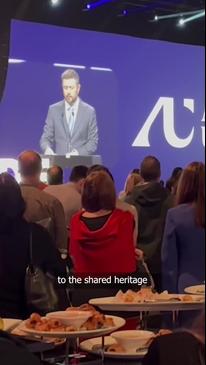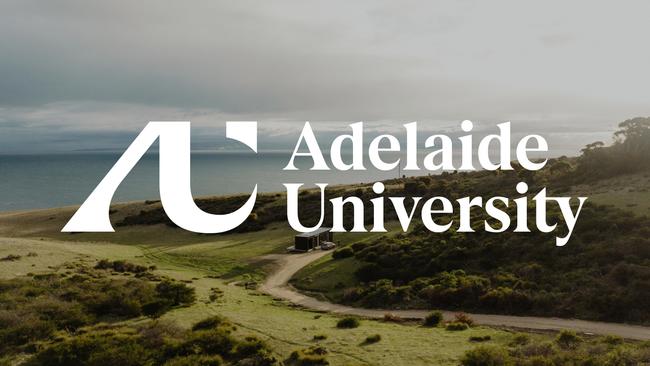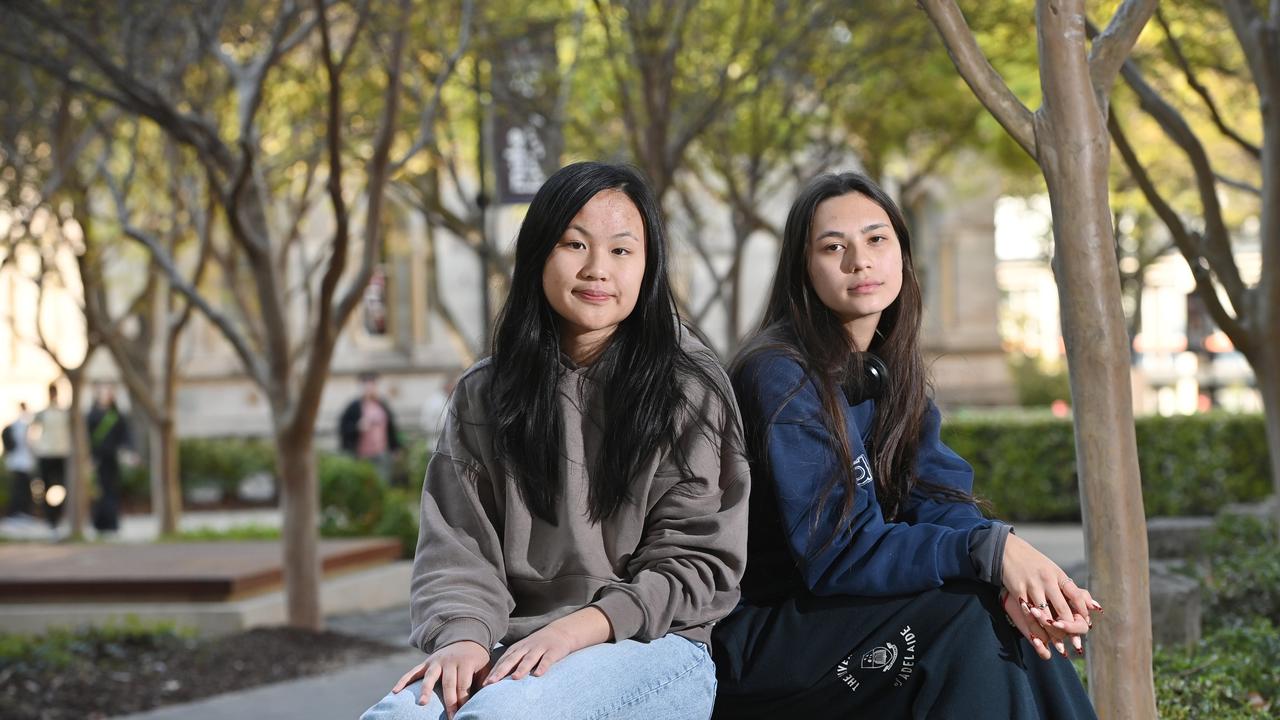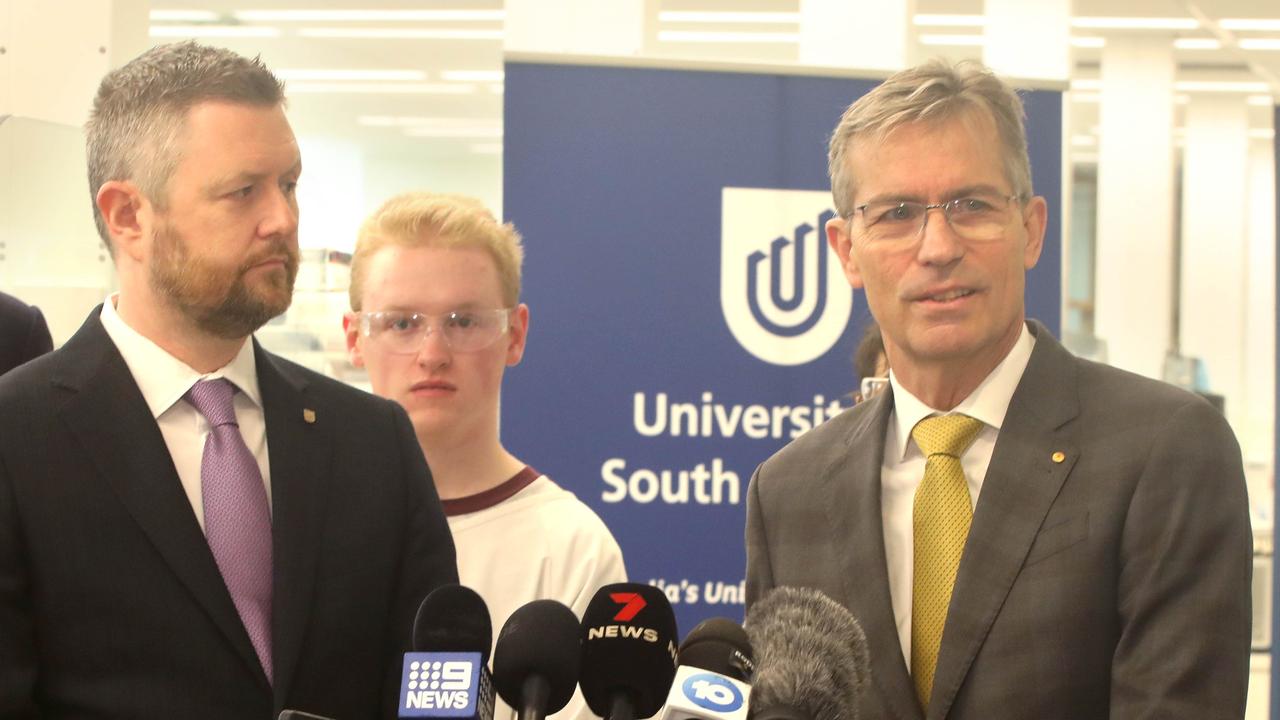New Adelaide University scrapping most face-to-face lectures under digital and student flexibility measures
Current uni students have expressed concern over the decision to scrap face-to-face forums at the new Adelaide University. But some think it could help their studies.

Tertiary
Don't miss out on the headlines from Tertiary. Followed categories will be added to My News.
Students at Adelaide’s new super-university will “no longer be expected to attend face-to-face lectures”, instead being offered “asynchronous digital activities” in an online-first shift.
As part of the multimillion-dollar merger of the University of Adelaide and UniSA, the new institution will “maximise flexibility for students”, according to a spokesman, and will only offer limited in-person lectures.
However, the educators’ union said staff have voiced anger privately over the move, claiming that students will suffer the most if it leads to sub-par teaching.
One concerned faculty member, who did not want to be identified but attended a large curriculum development meeting for the merged university, claimed there would be no lectures delivered at all.
A staff-only website for the merger said rather than lectures, student learning will be “self-paced and self-directed, utilising high-quality digital resources that students can engage with anytime and anywhere”.

Both universities took advantage of online classes during Covid lockdowns but continue to grow their offerings amid a cost-crunch. The university says online lectures will be offered.
“A blend of teaching and learning approaches maximises benefits for students and educators,” the university spokesman said.
“Adelaide University is responding to the needs of modern learners by balancing the desire for flexibility through online lectures, with rich face-to-face learning such as practicals, tutorials, studios, seminars, clinics and workshops that are delivered on campus,” the spokesman said.
“Our curriculum approach will be tailored to the needs of each area and will not be standard across unique programs. It will also take time to be fully implemented, within an expected 10-year horizon.”

Since being approved by parliament last year, the merger has been marred by a divisive new logo and claims that staff face a “horrifically unsustainable workload” if courses are squeezed into trimesters.
The merger was strongly backed by the Labor state government, with Premier Peter Malinauskas championing the move and the legislation that was required to pass for it to proceed.
National Tertiary Education Union SA president Andrew Miller said that lecturers “want autonomy” in choosing how to best teach students and “aren’t shrugging their shoulders” about the announcement.
He also said that lecturers saw it as a “unilateral” move by the university leadership.
“The way lecturers are perceiving it is that there are no face-to-face lectures,” Mr Miller said.
“(The universities) seem to be quite ambivalent to the concerns and keep using this shiny language about how good it will all be.
“Learning is not just about what is flexible to the learner. It’s about choosing the right pedagogy to inform proper teaching, which is ultimately decided by the lecturers.”

First year university students Marley Wiltshire, 18 and Erin Nguyen, 18, who are both studying a Bachelor of International Relations and Politics, believe phasing out face-to-face lectures will be detrimental to students.
“Face-to-face lectures are a really good motivation to get people out and at uni (and to) have that separation of home and school,” Ms Wiltshire from Montacute said.
“It’s good to be there, you can ask questions to the lecturers, you can go up to the lectures. You don’t have to email and wait six days for an email back.
“You can go up and talk to them and be like, ‘Hey, can you help me out with this?’ It could be a really, small question, and they can just help you out with it immediately.”
Ms Nguyen of Semaphore also feared the new structures will decrease the quality of education and learning for students.
“I feel like that would mean the tutorial classes or face-to face sessions would get bigger and the teachers won’t be able to get around to everyone,” she said.
“Right now, we can contact our professors and they have time to reach out to us. But because we’re merging, and say we’re using the same teachers, will they have time to really divert their attention and cater to our needs?.”


UniSA students James Gilder, 27, and Edward Beinke, 23 - who are in the second year of their Bachelor of Medical Radiation Science degree - believe the model will provide students with more flexibility.
“It just gives me the opportunity to be able to watch the lecture slides in my own time and I have the ability to write my notes as I’m watching it because I can stop and watch the video,” Mr Gilder of West Croydon said.
“I think coming in kind of forces them (students) to actually be there, watch the content, whereas, if it’s online people can procrastinate.”
Mr Beinke of Pennington said the success of asynchronous digital activities would depend on “what kind of student you are”.
“In my case, it’s more helpful being online because of my busy schedule. I can be a full time worker, and a part time student,” he said.
“Coming into the city sometimes takes an hour, so being able to access it (lectures) whenever you want really helps.
“But being in person, sometimes you retain it (information) better, but it just depends on the person and how you learn.”





